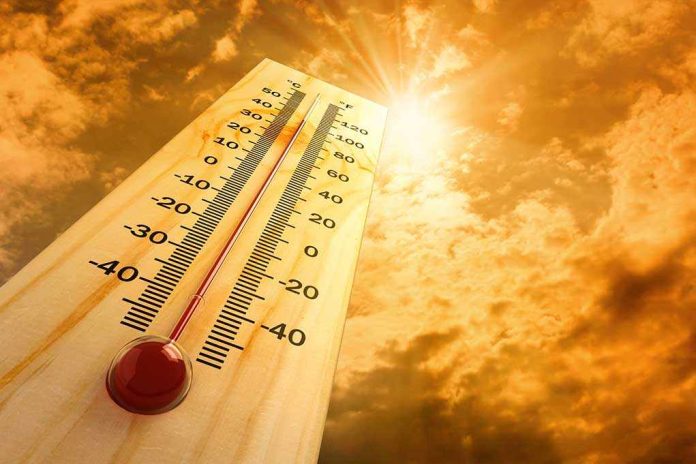
Imagine your air conditioner quietly staging a mutiny in the middle of a heatwave—not because it’s broken, but because you signed up for a power saver program and now someone else is pushing the buttons. How does that story end? You might want to buckle up before you find out.
At a Glance
- Power saver programs can remotely control your home’s cooling and heating, often during the hottest or coldest days.
- While they promise bill credits and grid stability, they may also mean surprise losses of comfort and even override your preferences.
- Privacy and equipment wear are real concerns, with vulnerable populations most at risk if things go sideways.
- The stakes are rising as regulators, utilities, and tech companies push these programs into more homes, whether you love them or not.
How Power Saver Programs Hijacked the Thermostat—and Why
Power saver programs, often pitched as demand response or “smart savings” plans, started as a noble utility experiment to keep the grid from blowing a fuse when everyone cranks up the AC at once. Utilities figured out long ago that during heatwaves or deep freezes, they could avoid expensive and polluting “peaker” power plants by asking (or nudging) folks to use less electricity at critical moments. At first, these programs targeted big factories and office buildings—places where a little temperature tweak wouldn’t spark a riot. But with the advent of Wi-Fi thermostats and connected home gizmos, utilities realized they could now reach into millions of living rooms, bedrooms, and dens, adjusting temperatures with a click. Your living room became a front line in the battle for grid stability.
Fast-forward to the modern era: the thermostat is now a portal. Utilities dangle carrots—bill credits, rebates, or cold, hard cash—for letting them tap into your home’s HVAC system. The catch? When the grid gets stressed, your comfort settings can be quietly overridden. Sometimes you can opt out; other times, like the infamous 2022 Colorado incident where 22,000 customers got locked out of their thermostats, you’re just along for the ride. If you’ve ever sweated through a “demand response event,” you know it’s not exactly a spa day. And as more new homes are required to have these smart devices, the fine print is only getting finer.
The Players: Who’s Really in Control?
At the top of this high-voltage food chain, utilities and grid operators set the rules. They’re motivated by grid stability, regulatory mandates, and the desire to avoid blackouts (and the bad press that comes with them). They control the incentives, the software, and, increasingly, the hardware in your home. Meanwhile, residential consumers—ostensibly the ones in charge—often get swept up by promises of savings without realizing the full implications. Many sign up with a few taps, not realizing that “emergency event” can mean no override, even if grandma’s sweating on the sofa.
Manufacturers of HVAC systems and smart thermostats are busy building new, DR-compatible gadgets and forming alliances with utilities. They hold the tech keys, sometimes mediating between you and the utility, sometimes quietly collecting troves of data. Privacy advocates and HVAC professionals are the wild cards in this drama. They warn that with great connectivity comes great responsibility—and potential for great discomfort. Installers field customer complaints about weird system glitches or rapid cycling; privacy watchdogs fret about who’s watching whom. Regulators, meanwhile, keep adding new rules to the mix, mandating DR readiness in building codes and keeping a wary eye on consumer complaints.
Comfort, Privacy, and the Fine Print Nobody Reads
On paper, the benefits sound glorious: lower bills, fewer emissions, a cleaner conscience. In practice, the story’s more complicated. Yes, you might score a $50 rebate or annual bill credit, but what happens when your AC cuts out during a 105-degree scorcher? Some programs offer override options—if you’re home, awake, and fast enough to catch the alert. Others go into full lockdown mode during emergencies, prioritizing grid integrity over your personal comfort.
Then there’s the question of who’s watching your home’s every thermal move. Smart thermostats gather data about when you’re home, when you sleep, and what temperatures you prefer. That data, now in the hands of utilities and tech companies, is a juicy target for both marketers and hackers. And if your HVAC unit starts acting up because it’s being cycled on and off like a yo-yo, you might end up trading energy savings for a hefty repair bill—something HVAC pros have started to see with increasing frequency.
The Grid, the Future, and the Cost of Control
Utilities love to tout the environmental and economic upside of these programs. They can shave peak loads, reduce reliance on dirty power plants, and even help pave the way for more renewable energy. But as these programs expand, the risks multiply. Vulnerable groups—like the elderly or chronically ill—are especially at risk if they lose cooling during a crisis. Low-income families may appreciate the bill credits but often have the least margin for error if something goes wrong. And as more homes become “smart” by default, the opt-out process can be obscure, and the loss of autonomy more acute.
Experts agree: if demand response is going to work for everyone, it needs ironclad consumer protections, crystal-clear opt-in and opt-out processes, and robust privacy safeguards. Transparent communication is key. Utilities should treat customers as partners, not just levers on a giant switchboard. Otherwise, public trust will erode, and the backlash could leave both consumers and the grid worse off than before.
Sources:
Demand Response HVAC Strategies
How Demand Response Programs Save You Energy and Money
Tech Brief: Grid-Interactive Efficient Buildings and Demand Response
Demand Response Programs Explained







